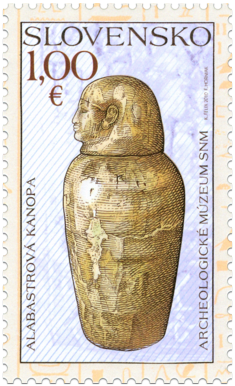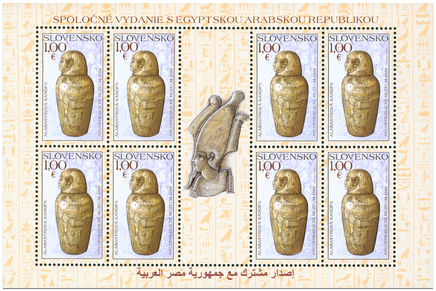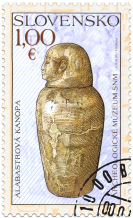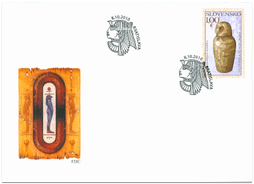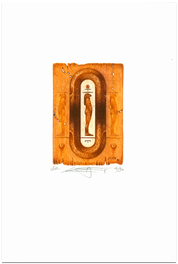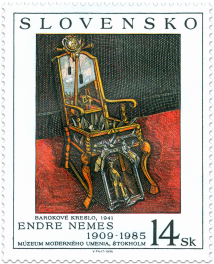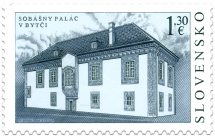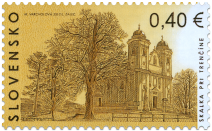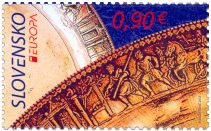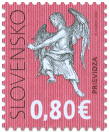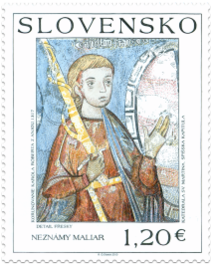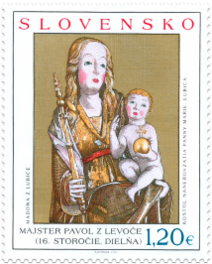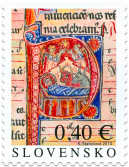481 Date of issue
08.10.2010 Face value
1.00 € Sell price
1.00 €
Canopic jars represent a special type of vessels used in Ancient Egypt to store the internal organs during the process of mummification. Their present name was established by the early Egyptologists who followed the antique tradition. Canopic jars were used in Ancient Egypt from the period of the 4th Dynasty (c. 2543 – 2436 BC). Materials used for their production could be alabaster, limestone, pottery, faience, later also bronze. In the process of human body mummification, the viscera, lungs, intestines, liver and stomach in particular, were placed into four canopic jars. Lids of canopic jars had flat or domed shape at the beginning. They were later modelled into the human head form, and from the period of New Kingdom (c. 1539 – 1077 BC), they added the appearance of heads of four sons of god Horus, Imsety, Hapy, Duamutef and Qebehsenuef. Imsety was portrayed with a human head, Hapy with the head of a baboon, Duamutef with the head of a jackal, and Qebehsenuef with the head of a falcon. Canopic jar lids shaped into this form reflected the faith of the Egyptians in magical protection of the viscera of the dead in the context of Ancient-Egyptian religion. Lungs were under the protection of Hapy, god Qebehsenuef protected intestines, god Imsety protected liver, and stomach was protected by god Duamutef. Canopic jars usage in the funeral context was connected to mummification procedures application, which only people from higher society could afford.
Among the most beautiful and most preserved complete collections of the four canopic jars with protective chests is a discovery of Pharaoh Tutankhamen’s tomb from the second half of the 14th century BC, which is nowadays exhibited in the Egyptian Museum in Cairo.
Collection of the Archaeological Museum of the Slovak National Museum in Bratislava involves a complete set of four alabaster canopic jars. These canopic jars were a part of Dr. Daniel Schimko’s private collection in the 19th century donated to Protestant lyceum in Bratislava. Hieroglyphic text on the outer side of canopic jars implies that their original owner was a man named Kenamon, and he was a King’s scribe. The canopic jars are dated approximately to the period of the New Kingdom (publications state the 18th or the 19th Dynasty BC).
Dušan Magdolen, PhD.
Similar products
273 Date of issue
12.10.2002
197 Date of issue
23.11.1999
196 Date of issue
23.11.1999
102 Date of issue
05.10.1996
569 Date of issue
19.09.2014
522 Date of issue
14.09.2012
521 Date of issue
13.07.2012
515 Date of issue
04.05.2012
510 Date of issue
27.01.2012
485 Date of issue
26.11.2010
486 Date of issue
26.11.2010
484 Date of issue
12.11.2010
© 2024 POFIS - Postal philatelic service. All rights reserved

